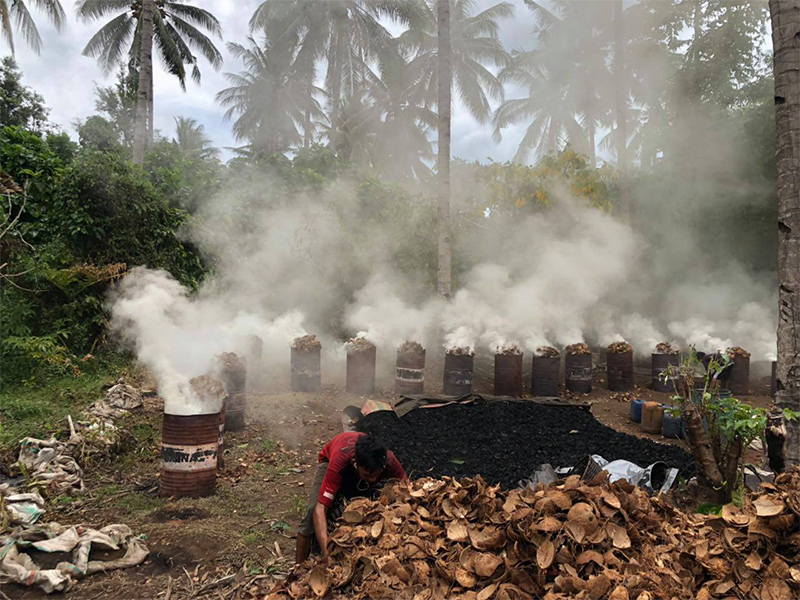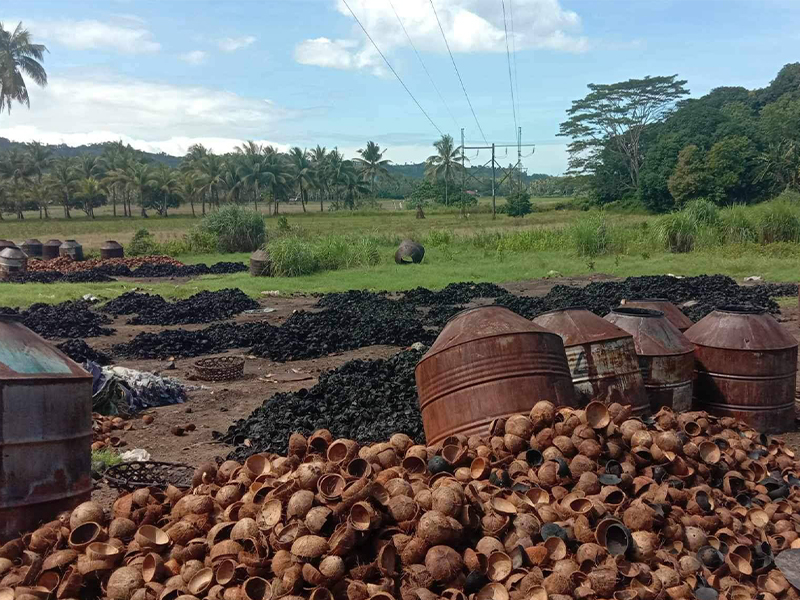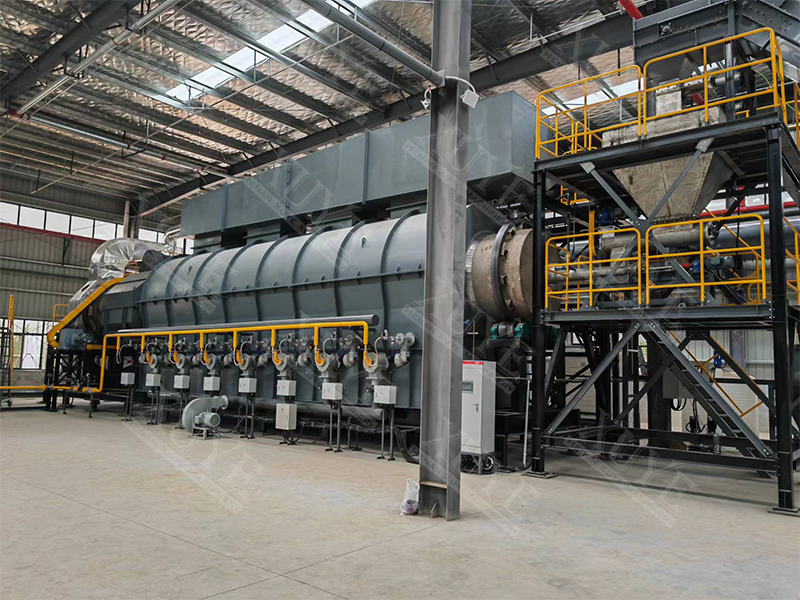Why can’t many manufacturers sell coconut shell carbonized materials at a high price?
Analysis of production bottlenecks of carbonized materials in self-built carbonization furnaces in Southeast Asia and technical upgrade solutions for Xuye Machinery
1.Introduction to activated carbon Kiln Technology’s Role
In the production of activated carbon and carbonized materials, kiln technology undoubtedly plays a pivotal role. As a company focusing on the research and development and production of activated carbon kiln equipment, Xuye Machinery is well aware of the unique needs of different markets and customers for the quality of carbonized materials.
2.Current status of self-built kilns in Southeast Asia
Today, let us focus on the “self-built kilns” that are prevalent in the Southeast Asian market and the various parameters of the carbonized materials they produce, and explore the differences in the degree of fit between these characteristics and the needs of domestic manufacturers. It is worth noting that this technical bottleneck is becoming a key factor restricting the upgrading potential of the Southeast Asian carbonized material industry.
The picture is a real picture of the self-built kiln in Southeast Asia

3.Typical Quality Parameters in Southeast Asia
Through our visits to Southeast Asian countries, we found that many carbonized material manufacturers are still using traditional “self-built kilns” for production after field investigation. Although this kiln is simple and easy to use, it has certain limitations in the quality control of carbonized materials. According to our investigation, the quality parameters of carbonized materials produced by self-built kilns are roughly as follows:
Volatile matter: about 20%
Fixed carbon: 50%-55%
Moisture: more than 20%
Ash: 5%

4.Domestic Manufacturers’ Requirements
These parameters reflect the general level of the current Southeast Asian market for carbonized materials, but there is obviously a big gap with the high standards of some domestic manufacturers.
Demand indicators of domestic manufacturers
In contrast, domestic manufacturers have more stringent and specific demands for carbonized materials:
Fixed carbon: the higher the better, but generally not more than 85%.
Volatile matter: between 10%-15%, not less than 8%. Too low volatile matter will affect the activation of carbonized materials, which is the saying that the furnace cannot be lit.
Moisture: the lower the better.
Ash: The definition of activated carbon ash refers to the percentage of the residue obtained by burning a certain mass of activated carbon sample at high temperature to the original sample mass. The level of ash directly affects its adsorption performance, especially the liquid phase adsorption. Therefore, the lower the ash content, the better.
5.Reasons for Performance Gap in Southeast Asia
Why is it difficult for carbonized materials in the Southeast Asian market to meet the standards?
Tar produced by self-built kilns to manufacture carbonized materials
- Kiln structure defects
Uneven temperature control: The traditional steamed bun kiln has a slow temperature rise/fall speed, and the temperature difference in the kiln is large, resulting in high volatile residue and low fixed carbon conversion rate;
- Backward technology
Relying on manual experience, poor working environment, lack of automatic control, and large fluctuations in the quality of finished products.
Direct water cooling leads to excessive moisture content in carbonized materials.
Poor adaptability of raw materials, insufficient pretreatment of raw materials such as coconut shells, and difficult removal of ash impurities.
6.Introduction of Xuye’s Solution
We have introduced advanced kiln technology for externally heated carbonization furnaces. These technologies can not only effectively improve the quality parameters of carbonized materials to make them more in line with the needs of domestic manufacturers, but also significantly reduce production costs and energy consumption.

By launching our designed carbonization furnaces and activation furnaces in the Southeast Asian market, we can help manufacturers achieve the following goals:
- Increase the fixed carbon content, reduce volatile matter and moisture, and make the carbonized materials more in line with domestic market needs.
- Optimize ash control and reduce the proportion of ineffective components.
- Reduce production costs and energy consumption, improve production efficiency and market competitiveness.
Raccomandazioni correlate
-
Chemical phosphoric acid activated carbon production process
1062Phosphoric acid activation is a key technology for preparing highly porous activated carbon. This article explains in detail its production steps, phosphoric acid recovery methods and industry application cases.
Visualizza i dettagli -
Linea di produzione di carbone attivo chimico
1248Comprendere le attrezzature della linea di produzione di carbone attivo chimico e la tecnologia di produzione professionale per contribuire a migliorare le prestazioni di adsorbimento del carbone attivo.
Visualizza i dettagli -
Don’t know how to choose activated carbon? Choose the right one to double your efficiency!
724Activated carbon kilns designed specifically for coconut shells, wood, coal and other raw materials optimize carbonization and activation processes, improve the adsorption performance of finished products, and provide free raw material testing ser...
Visualizza i dettagli -
The advantages of coconut shell activated carbon in gold refining, you will understand after reading this!
431Specialized in the production of activated carbon kilns for water treatment, air purification, gold extraction and other fields.
Visualizza i dettagli
 Henan Xuye Machinery Equipment Co., Ltd.
Henan Xuye Machinery Equipment Co., Ltd.





